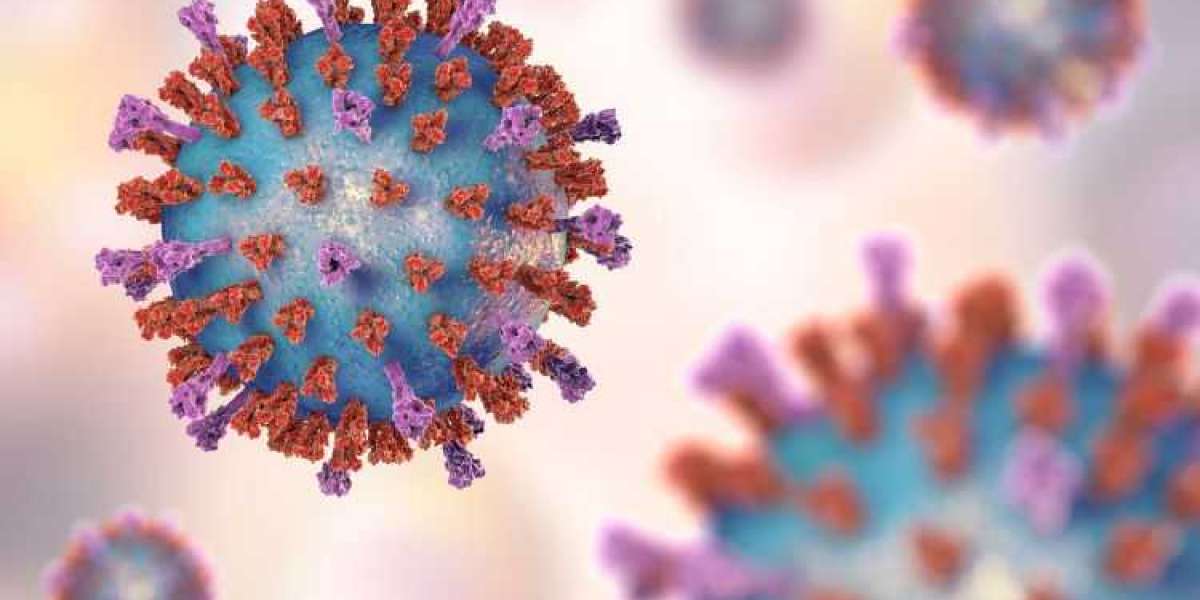The global RSV (Respiratory Syncytial Virus) diagnostics market size is rapidly evolving, driven by the need for accurate and timely diagnosis of this common respiratory infection. In 2023, the market achieved a significant milestone, attaining a value of approximately USD 1028.55 million. Furthermore, forecasts indicate that the RSV diagnostics market is poised for substantial growth, with a projected Compound Annual Growth Rate (CAGR) of 10.2% during the forecast period of 2024-2032, aiming to reach a staggering USD 2465.26 million by 2032. This robust growth underscores the critical importance of RSV diagnostics in healthcare, especially among infants and young children who are particularly vulnerable to severe RSV infections.
In this blog post, we will delve into the fascinating world of RSV molecular diagnostics, highlighting the remarkable advancements that have transformed the landscape of RSV detection. Molecular diagnostic techniques have revolutionized the accuracy, speed, and specificity of RSV diagnosis, providing healthcare professionals with powerful tools to better manage and mitigate the impact of RSV on public health.
Understanding RSV Molecular Diagnostics
Before we explore the advancements in molecular diagnostic techniques, let's first establish a fundamental understanding of what molecular diagnostics entail in the context of RSV.
Molecular diagnostics involve the detection of specific genetic material (DNA or RNA) of a pathogen, in this case, the RSV virus, in patient samples such as nasopharyngeal swabs or bronchoalveolar lavage fluid. This approach offers several advantages over traditional methods, including increased sensitivity and specificity, quicker results, and the ability to identify specific RSV strains.
Advancements in Molecular Diagnostic Techniques
I. Polymerase Chain Reaction (PCR) in RSV Diagnosis
Polymerase Chain Reaction (PCR) is a cornerstone of molecular diagnostics. It is a technique that amplifies the genetic material of the RSV virus, making it easier to detect. Here's a closer look at how PCR has transformed RSV diagnosis:
PCR, in essence, is a laboratory-based method that uses a DNA polymerase enzyme to replicate specific DNA segments of the RSV genome.
One of the primary advantages of PCR is its remarkable sensitivity, allowing for the detection of even low viral loads of RSV. This makes it an invaluable tool in identifying RSV infections in their early stages.
PCR can also provide valuable information about the specific strain of RSV, aiding in epidemiological studies and the development of targeted treatments and vaccines.
However, it's important to acknowledge that while PCR offers exceptional sensitivity and specificity, it may require sophisticated equipment and trained personnel, limiting its use in some settings.
Next-Generation Sequencing (NGS) for RSV Genotyping
Next-Generation Sequencing (NGS) has emerged as a game-changer in the field of genomics, and it has found significant applications in RSV genotyping. Here's how NGS contributes to our understanding of RSV:
NGS is a high-throughput technology that allows for the rapid and comprehensive sequencing of the entire RSV genome.
By sequencing the entire genome of RSV, researchers can gain insights into the genetic diversity of the virus, track its evolution over time, and identify potential drug targets.
NGS is particularly valuable in epidemiological studies, helping researchers understand how RSV spreads and evolves within populations.
NGS-based genotyping has the potential to inform vaccine development efforts by identifying conserved regions of the RSV genome.
Advances in Real-time RT-PCR for RSV Quantification
Real-time reverse transcription polymerase chain reaction (RT-PCR) is another crucial molecular diagnostic technique that has advanced RSV detection. Let's delve into the specifics:
Real-time RT-PCR combines reverse transcription (converting viral RNA into complementary DNA) with PCR amplification in real-time, allowing for the quantification of RSV RNA in patient samples.
This technique is highly sensitive and can provide quantitative data, helping healthcare professionals monitor the viral load in RSV-infected individuals.
Quantitative RSV data are invaluable in clinical settings, as they can inform treatment decisions and assess the effectiveness of antiviral therapies.
Real-time RT-PCR is commonly used in research and clinical laboratories, contributing to a deeper understanding of RSV epidemiology and pathogenesis.
Isothermal Amplification Techniques for Rapid RSV Diagnosis
Isothermal amplification techniques have gained prominence in recent years for their ability to provide rapid and specific RSV diagnosis. Here's what you need to know:
Isothermal amplification methods, such as Loop-Mediated Isothermal Amplification (LAMP) and Recombinase Polymerase Amplification (RPA), amplify specific RSV sequences at a constant temperature.
These techniques are known for their speed and simplicity, making them ideal for point-of-care testing and resource-limited settings.
Isothermal amplification methods have the potential to revolutionize RSV diagnosis by providing results within 30 minutes to an hour, compared to several hours required for traditional PCR.
These techniques are particularly useful in emergency departments and clinics where rapid diagnosis is critical for patient management.
Challenges and Considerations
While the advancements in molecular RSV diagnostics are indeed remarkable, it's essential to acknowledge the challenges and considerations associated with these techniques:
Sample Handling and Quality Assurance: Proper sample collection, storage, and transport are crucial to ensure the accuracy of molecular RSV diagnostics. Inadequate sample handling can lead to false-negative results.
Cost Considerations and Accessibility: Some molecular diagnostic methods, such as NGS and real-time RT-PCR, can be expensive and require specialized equipment and skilled personnel. Ensuring accessibility to these techniques in resource-limited settings remains a challenge.
Standardization and Validation: Developing standardized protocols and validating molecular diagnostic assays for RSV detection are ongoing efforts in the field. Ensuring the reliability and reproducibility of results across different laboratories is essential.
Future Prospects and Research Directions
As we look ahead, the future of RSV molecular diagnostics holds exciting possibilities and research directions:
Emerging Technologies and Research Trends: Ongoing research efforts are exploring novel diagnostic technologies, including CRISPR-based methods and advanced sequencing techniques, to enhance RSV detection.
Potential Breakthroughs: Continued research into RSV genetics, host-pathogen interactions, and immune responses may lead to breakthroughs in diagnostic methods and therapeutic interventions.
Promising Directions: Collaborations between researchers, clinicians, and industry partners are vital to advancing RSV diagnostics. Investments in research and development can drive innovation in this critical field.
Conclusion
In conclusion, the global RSV diagnostics market is witnessing unprecedented growth, reflecting the increasing demand for accurate and timely diagnosis of RSV infections. Molecular diagnostic techniques, such as PCR, NGS, real-time RT-PCR, and isothermal amplification, have played pivotal roles in this market expansion. These techniques have not only improved the precision of RSV diagnosis but also paved the way for a deeper understanding of the virus's genetic diversity and evolution.
As the RSV diagnostics landscape continues to evolve, addressing challenges related to sample handling, cost, and accessibility remains a priority. Nevertheless, the future of RSV diagnostics holds great promise, with emerging technologies and research trends poised to revolutionize the field. Collaborations among stakeholders, including researchers, healthcare professionals, and industry leaders, will be essential in driving innovation and ultimately mitigating the impact of RSV on public health.








